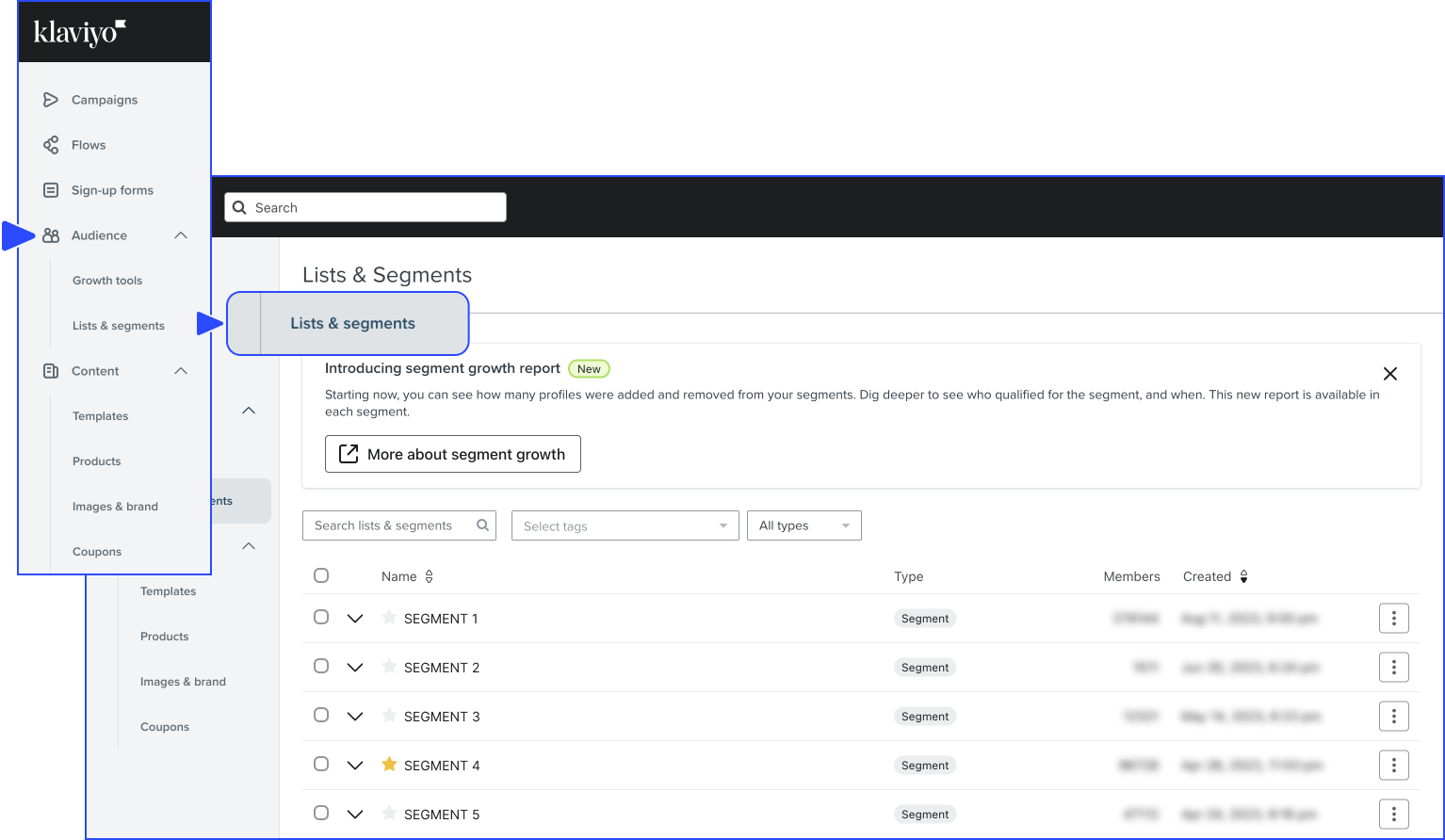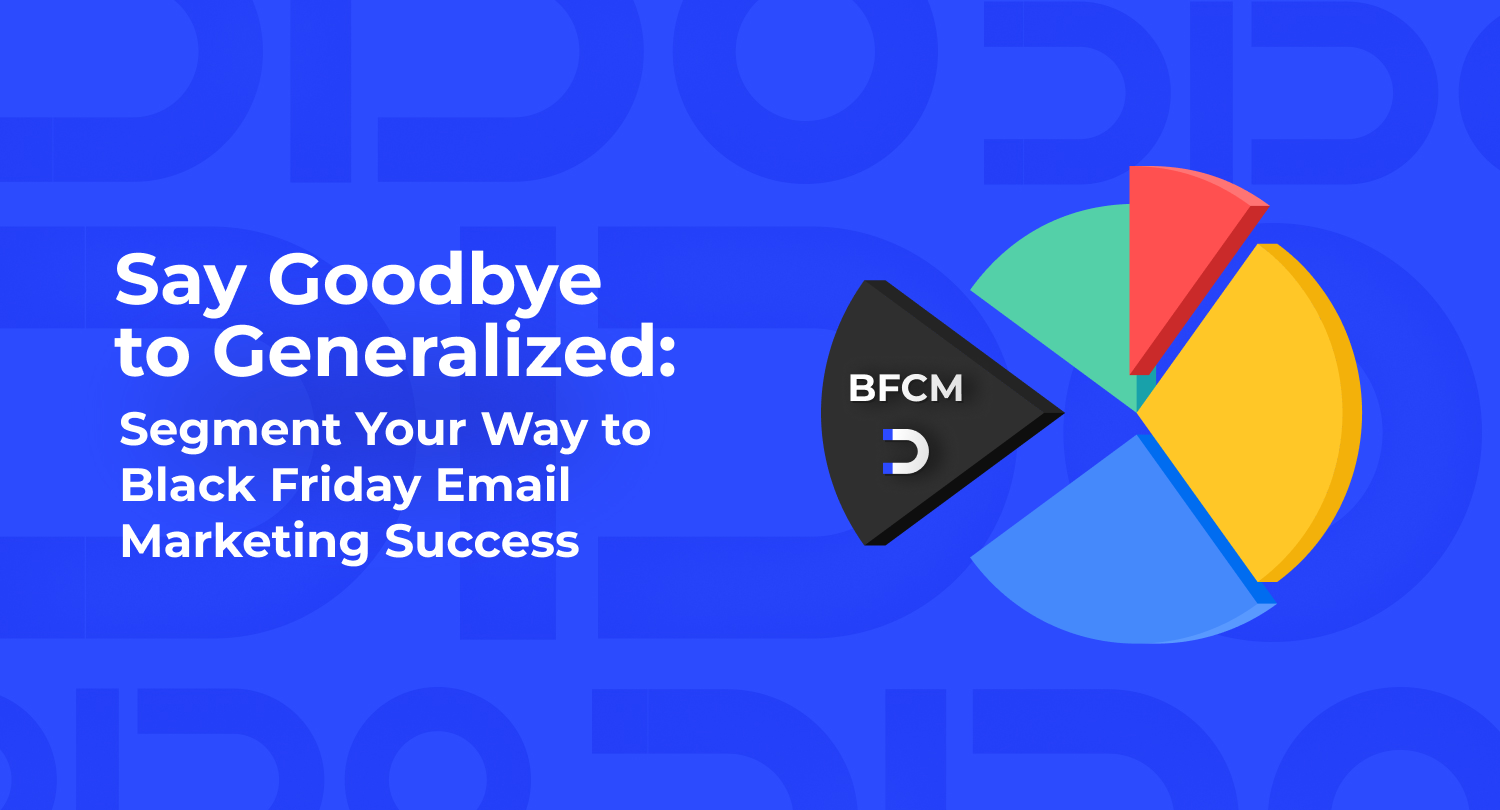As a savvy marketer – or a skilled eCommerce entrepreneur – you’re probably familiar with the importance of standing out in a crowd. Brands are constantly competing to capture their audience’s attention, especially around sales-heavy days like Black Friday.
The key to having your emails rise above the rest is simple: email list segmentation! By segmenting your email list, you’re getting the right emails to the right people at the right time. That not only increases your chances of an opened email…but it increases the chances of a conversion, too.
In this blog, we’ll highlight why generic email marketing is a thing of the past, introducing new, creative ways to segment your list for maximum Black Friday success.
The Perils of Generic Email Marketing
Imagine this scenario:
You and your team have spent hours crafting a compelling Black Friday promotion email. From engaging, persuasive copy to eye-catching, captivating design, you’re convinced this is the best Black Friday email of all time. You excitedly hit the “send” button, expecting subscribers to flock to your website in hordes.
Instead, you’re met with radio silence.
No traffic, no conversions, no success. But why?
Chances are, your top-notch email was too generic. It wasn’t created for anyone in particular, which means you were casting too wide – and too generic – of a net to actually “catch” any one individual.
In a world that’s becoming hyper-personalized, one-size-fits-all messaging in your marketing unfortunately no longer cuts it.
That’s where email segmentation swoops in to save the day.
Generic is Out, Segmented is In
If you want to avoid the downfalls that come with sending generic emails, segmentation is your secret weapon.
Email list segmentation involves dividing your subscriber base into distinct groups based on specific criteria. By dividing your audience – and personalizing the content you send to each group based on their preferences – you can ensure you’re always delivering relevant, tailored content that will resonate.
“Segmentation” is more than just a marketing buzzword. It’s a powerful tool that, when leveraged to its full potential, can significantly enhance your email campaign effectiveness, both around Black Friday and beyond.
Getting Started with Segmentation
If you’re ready to get on the segmentation train in time for Black Friday, there are a few things you need to do.
First, and perhaps most importantly, ensure your email marketing platform supports segmentation capabilities. If it doesn’t, you’ll want to start shopping for a new platform immediately – transferring data and contacts to a new platform isn’t a quick process!

Next, you’ll need to gather and evaluate the necessary data. Look at your subscriber’s demographic information, purchase history, engagement metrics, and product category interest to start identifying trends and similarities. (We’ll explore what to do with this data in the next section).
Then, start crafting compelling messages, campaigns, and flows that speak directly to each segment’s needs and desires. Remember: the goal is to make each subscriber feel like you’re speaking directly to them. Make them feel like you understand their individual preferences and can help satisfy their purchase and product needs.
Different Ways to Segment Your Audience
As mentioned above, segmentation is all about dividing and organizing your subscriber base into groups based on certain criteria.
But what criteria do you use to segment?
The answer to that is simple: it’s up to you!
You can segment your audience based on a wide range of criteria and characteristics, including demographic information and purchase history (as mentioned in the previous section’s discussion of data collection).
Here are 5 data-based ways you can segment your audience for maximum Black Friday success.
1. Demographics
This type of segmentation uses demographic traits like age, gender, location, income level, etc. to sort audience members.
2. Past Purchase Behavior
This type of segmentation looks at audience members’ past purchase behaviors, grouping those with similar buying patterns.
3. Engagement Level
This type of segmentation uses metrics like click-through rates to gauge audience engagement, grouping subscribers with similar activity.
4. Product Category Interest
This type of segmentation leverages subscribers’ past interactions, grouping audience members with similar product interests.
5. Abandoned Carts
This type of segmentation groups and re-targets subscribers who left items in their carts without completing their purchases.
Choosing segmentation criteria will vary between brands, which is why it should always be approached with a brand-specific strategy. When choosing your segmentation strategy, always think about your audience and unique product.

The Benefits of Segmentation
Once your newly segmented emails are prepped and ready to send, it’s only a matter of time before the benefits of segmentation become clear for your brand.
As your segmented content begins to reach your audience, you’ll start to see a range of benefits, including:
■ Higher Open Rates
■ Higher Click-Through Rates
■ Enhanced Conversion Rates
■ Improved Customer Relationships
■ Optimized Marketing Spend
…and more.
Personalizing your content means you resonate better with your audience, fostering a stronger sense of connection and improving internal efficiency in the process.
The reality is that personalized content outperforms generalized content, so a segmented list is a better converting list — and not just on Black Friday!
Wrap Up
As Black Friday approaches, don’t fall into the trap of generic email marketing. It may seem “easier” or “faster” at first glance, but taking the time to segment your audience in a meaningful, data-informed way will only make things easier down the road… when you start to see better conversions, that is.
Embracing the power of email list segmentation to create personalized, targeted, and more effective campaigns is the key to stronger campaigns, both for Black Friday and for the rest of the year, too.
